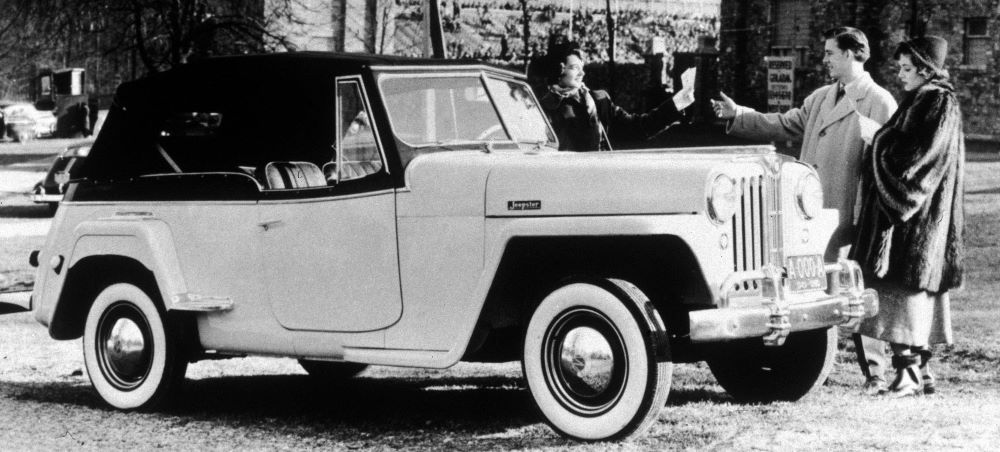
Jeep Jeepster (1948-1973)
The Jeepster was the last phaeton-style open-bodied vehicle made by a U.S. automaker, using side curtains for weather protection instead of roll-down windows. Originally offered with the “Go-Devil” engine, it was eventually fitted with the 161 cubic-inch six-cylinder “Hurricane” engine, but never offered in four-wheel drive.
The Jeep Jeepster is a significant model in the history of Jeep, bridging the gap between utilitarian off-road vehicles and more comfortable, civilian-oriented cars offing convertible body style with rear-wheel drive. Features included a folding windshield, side curtains, and an optional hardtop
Production Years:
- First Generation: 1948-1950
- Second Generation (Jeepster Commando): 1966-1973
Engine/Transmission Options:
- Go-Devil I4 Engine: 2.2L (134 cu in) L-head inline-4
- Hurricane I4 Engine: 2.2L (134 cu in) F-head inline-4 (introduced in 1949)
- Lightning I6 Engine: 2.6L (161 cu in) L-head inline-6 (introduced in 1949)
- Transmission: 3-speed manual transmission with overdrive

Second Generation Engine Options:
- Hurricane I4 Engine: 2.2L (134 cu in) inline-4
- Dauntless V6 Engine: 3.7L (225 cu in) V6
- AMC I6 Engine: 3.8L (232 cu in) inline-6 (introduced later)
- AMC V8 Engine: 5.0L (304 cu in) V8 (introduced later)
Second Generation Transmission Options:
- 3-speed manual transmission
- 4-speed manual transmission
- 3-speed automatic transmission (optional)
Available in several body styles, including a convertible, station wagon, and pickup. More rugged and versatile than the first generation, designed to compete with the growing market of compact SUVs. The Jeepster Commando was built on a more robust chassis, making it suitable for off-road use. Offered both rear-wheel drive and four-wheel drive options. Targeted at a broader market, including outdoor enthusiasts and those needing a versatile, all-purpose vehicle. Both generations of the Jeepster are now considered classic vehicles, valued by collectors and Jeep enthusiasts for their unique blend of style, versatility, and historical importance.

You must be logged in to post a comment.